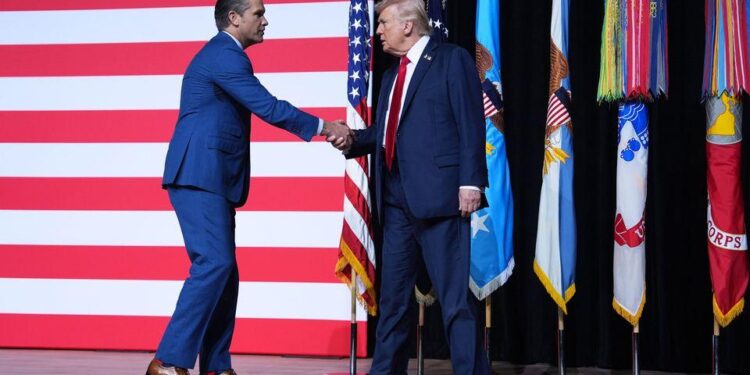As the prospect of a government shutdown looms on the horizon, former President Donald Trump appears poised to leverage the fiscal brinkmanship as a strategic tool to advance his economic agenda. Amid ongoing budget negotiations and partisan divides, Trump’s approach could transform a typically disruptive shutdown into an opportunity to pressure lawmakers, reshape federal spending priorities, and inject momentum into key policy initiatives. This article examines the potential ways Trump might harness the shutdown stalemate to turbocharge his economic objectives and the broader implications for the U.S. economy.
Trump leveraging government shutdown as a strategic tool to pressure economic reforms
Facing mounting pressure to deliver on promised economic reforms, Donald Trump may view a government shutdown as a calculated gamble to accelerate policy changes. By halting federal operations, Trump can create urgency in Congress, compelling lawmakers to engage on his terms. This tactic leverages the inherent disruption caused by a shutdown to push through controversial budgetary priorities, such as tax restructuring, deregulation, and increased defense spending. The strategy banks on stoking fears of economic instability to extract concessions and align legislative actions with his administration’s economic vision.
Key components of this pressure play include:
- Heightened negotiating leverage: Using shutdown threat as a bargaining chip.
- Public attention shift: Framing the narrative around economic stagnation without reforms.
- Targeted budget demands: Prioritizing funding for strategic sectors like manufacturing and energy.
- Tax and regulatory reforms: Pushing for sweeping changes under duress.
| Element | Intended Outcome |
|---|---|
| Shutdown Duration | Short, high-impact |
| Congressional Concessions | Major policy shifts |
| Economic Messaging | Urgency and momentum |
| Public Response | Divided but engaged |
Examining the potential impacts of a shutdown on markets and federal programs
Should a government shutdown materialize under Trump’s influence, the ripple effects on financial markets could be immediate and pronounced. Investor sentiment would likely experience heightened volatility, as uncertainty over federal operations challenges market stability. Key sectors heavily reliant on government contracts, such as defense and infrastructure, might face abrupt delays, prompting cautious reevaluations from institutional investors. Additionally, consumer confidence could waver, potentially dampening retail and service industries due to fears of broader economic slowdown.
Federal programs stand to bear significant strain amid funding interruptions. Essential services like social security processing, veterans’ benefits, and public health initiatives might encounter temporary suspensions or reduced efficiency. The impact on lower-income populations, who disproportionately depend on these programs, could be severe, exacerbating socioeconomic disparities. Below is a simplified overview of potential shutdown consequences by program category:
| Program Type | Potential Impact | Duration Sensitivity |
|---|---|---|
| Social Security | Delayed payments, processing backlogs | High |
| Military & Defense | Contract pauses, troop pay uncertainties | Medium |
| Healthcare & Public Health | Reduced clinic services, halted research funding | High |
| Federal Grants & Aid | Grant suspensions, project delays | Medium |
Strategies Trump could employ to negotiate budget priorities and accelerate policy goals
To sharpen his leverage in budget negotiations, Trump might opt for targeted pressure points that force stakeholders to reconsider their stances. This could involve prioritizing key sectors such as infrastructure investment, defense spending, and corporate tax reductions, signaling a willingness to accept a temporary government shutdown as a bargaining chip. By strategically staging funding delays on less critical programs, the administration could create a sense of urgency that compels Congress to acquiesce to his agenda. Moreover, emphasizing reforms that promise immediate economic stimulation could sway public opinion by framing the shutdown as a necessary reset rather than a political standoff.
Another strategy could revolve around solidifying alliances with conservative factions while appealing to moderate lawmakers through selective concessions. The use of targeted messaging campaigns and high-profile media appearances would amplify pressure on budget committees to fast-track proposals aligned with Trump’s priorities. The table below outlines potential policy priorities alongside expected leverage points in negotiation tactics:
| Policy Priority | Negotiation Leverage | Expected Impact |
|---|---|---|
| Infrastructure Spending | Delay in non-essential projects funding | Boost job creation, economic growth |
| Defense Budget Increase | Link to national security urgency | Strengthen military readiness |
| Corporate Tax Cuts | Highlight business investment benefits | Stimulate private sector expansion |
The Way Forward
As the prospect of a government shutdown looms, all eyes remain on how former President Trump might leverage the situation to advance his economic priorities. Whether this high-stakes strategy will resonate with lawmakers and the public alike remains to be seen. What is clear, however, is that the unfolding events will have significant implications for the economy and the broader political landscape moving forward. Stakeholders from Wall Street to Main Street will be watching closely as the situation develops.































